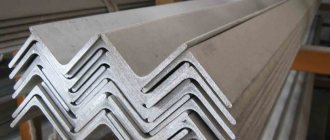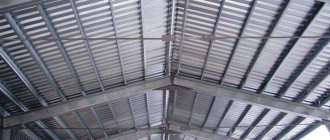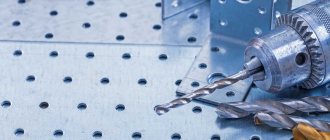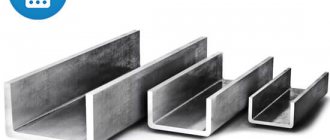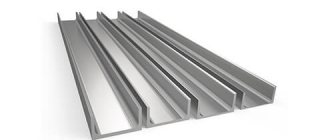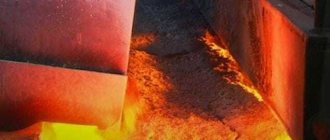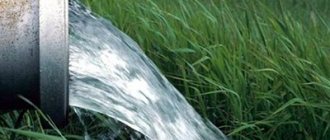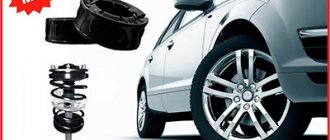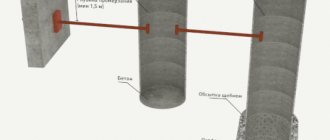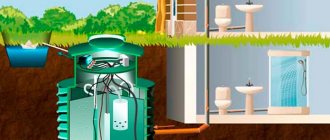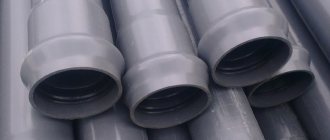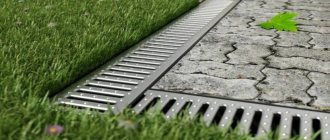This is a type of rolled metal that has a U-shaped cross section. This structure is formed from a wall and two shelves. Modern construction is unthinkable without such elements, which, with a relatively low weight, can easily withstand significant loads. If you need a channel, the dimensions of which must be strictly defined, then you need to remember that there are equal and unequal flange products. In the second case, the dimensions of the shelves forming the U-shaped section will be different.
The following types of channels are used in construction:
- shelves having an internal slope;
- with parallel internal edges;
- bent equal-strength and unequal-strength;
- special;
- cold rolled.
WHAT IS A CHWELLER?
.
The very word “channel” in German is translated as “skirt”; these two items have some distant similarities. The channel is a structure made of non-ferrous or ferrous metal, in cross section resembling the letter P in various variations, since the edges can be either parallel to each other or located at an angle. A distinctive feature of this product is strength, so most often channels are made of steel and its alloys, and are used to strengthen any supports, components, surfaces made of fragile materials, frames.
The production of channels is strictly regulated, which means that the products produced by a metalworking enterprise must comply with state standards, that is, be universal in use. Each type of channel has its own GOST.
Product designation
To make choosing the right product easier, the distance between shelves is used. This is the number that appears after the designation of the element, but there are also differences in length: it varies from 4 to 12 meters.
From the point of view of counteracting large loads directed vertically downward, the channel is second only to the I-beam. The width of the shelves varies and starts from 32 mm, and can reach 115 mm, therefore the load capacity varies within a wide range. The situation is similar with height, which ranges from 5 to 40 cm.
It must be remembered that the standard channel 10, the dimensions of which can be different, will be the cross-section that is required in a particular case and depends on the place of application. The letter found after the number indicating the distance between the shelves will tell the specialist about the type of product. If a product with the “U” index is used, then we are talking about inclined internal edges. When the shelves are located parallel, this is a “P” series channel. There are also “L” - light, “S” - light varieties.
Features of application
Modern channels belong to the category of metal products, the cross-section of which resembles the letter “P”. The material itself consists of a wide wall and two adjacent strips. Most often, a steel channel (bent, equal-flange) is produced in lengths from 3 to 12 meters, while the thickness of its walls varies within 8 millimeters. The main feature of this product is its low specific gravity and high strength. All structures that were made from such rolled metal are distinguished by their lightness and quality, as they are able to withstand heavy loads.
The bent profile is distinguished by the fact that it always has precise dimensions and slightly rounded corners. It is also worth considering that the finished product never has defects, since all errors in the workpieces are eliminated under the influence of a roll forming machine. Thanks to this, the final material does not require additional processing. In repair work, bent profiles are increasingly being used, which can be used together with a chamfer.
Today, bent equal-flange channel is actively used in the reconstruction of buildings, as well as for the construction of various objects. All metal structures in which this material is present are a huge competitor to traditional reinforced concrete buildings.
Thanks to this, craftsmen receive many economic and technological advantages, which allows them to reduce the complexity of installation work, thereby reducing construction time. For example, many engineers are accustomed to always paying attention to the types of channel, which, in particular, is a galvanized type of thermal profile, manufactured to individual sizes.
It is also worth considering that the large-scale use of this material can significantly reduce the level of load on the final structure, making it possible to use more affordable types of foundation. The final dimensions of the bent channel made this material universal and multifunctional, due to which it is actively used in both private and industrial construction. Experienced craftsmen use it to produce high-quality partitions in offices and residential buildings.
We should not forget about mechanical engineering, where it is simply impossible to do without bent metal products. Channels are actively used for the manufacture of durable parts and mechanisms for cars, as well as for the construction of universal frame structures. The strength of this material is so great that it is considered mandatory in those factories where reliable frames for massive trucks are manufactured.
Application of channels
Today, the demand for such products is quite high, which is due to the widespread use of concrete and metal structures. The attractiveness of the channel lies in the fact that it is light in weight and can withstand quite a significant load. The channel owes this feature to its U-shaped profile, which provides the necessary combination of structural properties and reliability. Metal structures of this type can be used both for construction and for repair work. They are used in a wide variety of fields, from mechanical engineering to the creation of various shelving.
Various metal structures that are erected for advertising purposes or for laying communications are also places where such elements are in demand. Channel 20, whose dimensions vary widely, is excellent for this purpose.
Its type depends on where the metal structure will be used. For example, to work under heavy loads, it is better to use a design with inclined shelves. In fact, the outer contour of the product still remains U-shaped, but the inner one already has some deviations from this shape, because the slope of the inner walls can be large. This results in increased wall thickness and higher reliability.
The type of channel and its parameters are selected only after calculations have been carried out, and they must be performed by a specialist. Otherwise, problems may arise due to the wrong choice of thickness or other characteristics of the product, which means the reliability of the structure will decrease.
WHY DO YOU NEED A CHWELLER
As mentioned earlier, this rolled metal product is found everywhere.
Steel channels, especially strong and reliable, thanks to these qualities, they are used to strengthen walls, reinforce concrete structures, build power lines, and make floors. This ensures the durability of these structures. If the channel is perforated, that is, it has holes for fastening, it can be used in installation work without welding. Also, pipes made of less durable materials can be laid inside the channel, this gives the pipeline high wear resistance.
Aluminum channels are used in lighter structures, in the manufacture of office partitions, shop windows, shelving, in everyday life, in repair, finishing and construction work, and in mechanical engineering.
Areas of application of metal channels
All of these advantages imply their widespread use in various areas of production and construction, including in the automotive industry. It is a necessary component in the manufacture of trucks. It is the channels that play a reinforcing role in load-bearing structures.
In large-scale construction, these products are indispensable as transverse supports and floors between floors. Also, a profile with a U-shaped section is used as the main material in the construction of frame structures and the installation of ramps. It is steel channel-shaped beams that can withstand high transverse or axial loads and are capable of increasing the strength of the floor several times when compared with wood materials. This is especially true in the construction of large spans.
On a note! The main condition for the correct choice of material is its compliance with the requirements of Gosstandart, which are indicated in special tables of channels. Their use will greatly simplify the solution of the task.
The U-shaped profile is used for the construction of frame supporting structures.
In addition to mechanical engineering and the creation of frames, channels are also used as an additional material in other types of transport production, for example, in crane and carriage building, where they serve as frames and frames. They can also be used in the process of reinforcing reinforced concrete structures.
Types of channel
The special channel is intended for use in the automotive industry (GOST 19425-74) and in carriage building (GOST 5267.1-90).
They are manufactured in lengths from 4 to 13 m, but on special order they can be longer than 13 m. The lengths of special channels are:
- channel of measured length;
- multiple measured length;
- measured length with a remainder of up to 5% of the batch weight (residue of at least 3 mm);
- multiple measured length with a remainder of up to 5% of the batch weight;
- of unmeasured length.
Depending on the rolling accuracy, the special channel is divided into: high strength - A, normal strength - B.
Steel bent equal-flange channels in accordance with GOST 8278-93 are manufactured on pipe mills from coiled steel of ordinary quality and high-quality carbon structural steel. The height of the equal-flange channel ranges from 50 to 400 mm, width from 32 to 115 mm.
The different lengths of bent equal-flange channel are:
- channel of measured length;
- measured and unmeasured lengths in an amount of no more than 5% of the batch weight;
- multiple measured length;
- multiple measured lengths from unmeasured lengths in an amount of no more than 5% of the lot weight;
- unmeasured length;
- limited length within unmeasured.
Steel bent unequal-flange channels are manufactured on roll forming mills from rolled cold-rolled and hot-rolled steel of ordinary quality, high-quality carbon structural and low-alloy steel in accordance with GOST 8281-80. They are also divided by numbers, which indicate the distance between the shelves (in mm). The length varieties are the same as for equal-flange channels.
Depending on the rolling accuracy, bent channels are divided into: high precision - A, increased precision - B, normal precision - B.
The highest category of quality for bent unequal and equal flange channels corresponds to channels with categories A and B.
Forms of bent channel: U - with a slope of the internal edges of the shelves, P - with parallel edges of the shelves, L - light series with parallel edges of the shelves, S - special.
What is a channel: features and advantages of the product
A channel is a rolled metal profile with a U-shaped cross section. It is made from several types of steel, including stainless steel. That is why the characteristics of the channel assortment include not only weight, size, but also material, as well as production technology. They are made by cold-rolled or hot-rolled methods.
The quality of the channel is guaranteed by its compliance with the appropriate GOST.
U-shaped profiles have design features. Most types of channels have parallel flange edges, but there are also those where the edges are not parallel to each other, but are made with a certain slope. The main feature of the range of U-shaped profiles is their high rigidity with low weight, which determines the widespread use of the material in the construction of structures with high loads.
Due to their main quality, channels have a number of advantages, including:
- high degree of strength;
- excellent resistance to bending loads;
- the ability to withstand loads of different directions, such as compression or rupture;
- resistance to shock loads that can lead to mechanical damage to the finished structure.
High-quality channels made of high-strength steel, manufactured in accordance with GOST requirements, have virtually no weaknesses that can provoke destruction of various types and nature.
The channel, made in accordance with all standards, is highly durable and reliable.
Some features of choice
The range of channels, of course, is significantly inferior in variety to the range of angles, but this does not prevent the selection of a product of the required dimensions and characteristics to solve a specific design problem. When choosing a specific brand from the assortment, you should be guided by the following rule, which is relevant for products of any profile: having decided on the type of channel that meets your requirements, you should include in the specification for the drawing the brand that is located closer to the beginning of the table.
The assortment, in which various types of channels are presented in table form, allows you to determine not only their sizes, but also a number of other important parameters:
- linear meter weight;
- cross-sectional area;
- axial moment of inertia;
- axial moment of resistance;
- radii of inertia.
The last three parameters are calculated relative to the central axis of the channel section.
It is very important to choose those brands of channels whose mechanical characteristics are not lower than the calculated ones by more than 5%. If this condition is not met for the selected brand of product, then it is better to take a channel one number higher.
Main parameters of channel 12: dimensions, weight and cost
A metal product called channel 12 with parallel flanges has a body thickness of 7.8 mm and a wall thickness of 4.8 mm. Such products are produced in lengths from 2 to 12 m. Longer copies can be made to order. The popularity of this type of profile is due to its positive qualities, contained in the optimal ratio of weight, strength and relatively low cost.
Profiles made of low-alloy steel are subject to operation at high temperatures and under conditions of increased exposure to chemicals. Also, the products have excellent resistance to compression and bending, but at the same time have poor resistance to torsion.
The weight of 1 meter of channel 12 can be found using the table above or using an online calculator. The price of the product depends on this parameter. According to the table, the weight of channel 12 per 1 meter is 10.4 kg.
Like channels of other sizes, this type of product has additional markings with different characteristics. The most popular is the 12P channel, which has parallel flanges with edges without slope.
The dimensions of the 12P channel are given below:
- width – 52 mm;
- linear meter weight – 10.40 kg;
- length in ton – 95.94 m.
The channel with mark 12 also has other series. For example, 12L is a rolled metal product with dimensions of 120x30 mm, characterized by inclined shelves. The weight of 1 m of such a profile is 5.02 kg, and the footage of 1 ton is 199 m.
Helpful advice! The marking of the channel 12C indicates its special purpose, 12E - an economical series of products with shelves without slope. Their size is standard - 120x52 mm, and their weight is slightly lower - 10.24 kg. Accordingly, a ton of material contains almost 97 m.
Marking
If you look at the range of channels, you can see that it includes metal profiles with a wide range of sizes. With such a variety of options offered, it is very difficult to choose exactly the brand of channel that will be optimally suited for solving a particular problem. Naturally, the manufacturers took this point into account. To designate their products, they use markings, which can be used to get a fairly complete picture of the characteristics and dimensions of the U-shaped profile.
Markings that comply with GOST 8240-97 include both digital and alphabetic designations. The first number in the designation is the main characteristic; it corresponds to the size of the channel, that is, the distance between its flanges. By the letter in the marking you can determine what type the channel is. These can be products in which the internal edges of the shelves are made with a slope or are parallel to each other (“U” and “P”, respectively), metal profiles of economical (“E”) or light (“L”) type, special purpose (“S” ).
If you need to know all the other dimensions of a channel of a certain brand from the assortment, then for this there is a special table in which they are indicated. The choice of a product of a certain brand is made depending on what kind of loads the structure for which it is planned to be used will be subjected to.
Main characteristics of the assortment and compliance of channels with GOST
The assortment implies different characteristics of channels. In particular, the following are taken into account:
- slope of internal faces;
- thickness of walls and shelves;
- radius of curvature inside the channel;
- width;
- cross-sectional area;
- weight of the channel and linear meter.
- grade of steel on which almost all physical and mechanical qualities depend (hardness, resistance to loads and corrosion).
The widespread use of U-shaped channels in various fields of construction and production has led to the creation of a large number of standards for their production.
A wide range of such profiles led to the development of a large number of GOSTs and other technical standards. The main condition for high quality is the compliance of the channels with these regulations.
Among the existing standards approved by Gosstandart, the following should be mentioned:
- GOST 8240-97. All channels made from hot-rolled steel correspond to it.
- GOST 19425-74. According to this regulation, I-beams and special channels are produced.
- GOST 8278-83. Bent channel, assortment includes requirements for equal flange profiles.
- GOST 8281-80. These are bent products with unequal shelves.
- GOST 5422-73. Channels made of hot rolled steel, manufactured specifically for tractors.
- GOST 5267.0-90. Hot-rolled U-shaped metal products for carriage building.
- GOST 21026-75. Hot-rolled steel profiles with bent flange for trolleys.
According to one GOST, different types of rolled metal are produced per channel. For example, a hot-rolled profile with a slope of flange edges from 4 to 10% is manufactured in accordance with GOST 8240-97. To distinguish it, it is marked with the letter “U” and the corresponding number, indicating the distance from shelf to shelf. According to the same GOST, a channel with parallel edges is also manufactured.
I-beam channels are most often used to create frame support structures that require increased loads.
Aluminum channel
The classic U-shaped structure made of steel not only has greater resistance to bending, but also has good resistance to torsional deformation, so the scope of application of such products is very wide. The use of aluminum has further expanded the scope where these metal structures are used today.
Channel 16, the dimensions of which are ideal for those structures that experience light loads, is used no less often than its steel variety. Aluminum structures are well suited for applications where it is necessary to contain elements in contact with the environment. Aluminum itself differs favorably from steel in that it does not interact with air or water, therefore the reliability of the future structure does not depend on such random factors as bad weather or improper care of painted elements.
In conclusion, we note that one of the main advantages of most types of channels is the ability to construct metal structures without the use of welding. This allows you to create collapsible structures that can be moved to another location in whole or in part. For example, this technology is used to create a variety of seasonal structures, temporary buildings or warehouses. A channel, the dimensions of which are proportional to its weight, is a modern building material that is in no hurry to give up its position to plastic or concrete. In general, an aluminum channel is much more profitable than a profile pipe of the same size, since it allows you to further reduce the weight of the future structure.
Table with dimensions of channels with parallel flange edges.
| Series P channel number | h | b | s | t | R | r | Cross-sectional area F cm2 | Weight 1m/kg | Reference values for axes | X0 cm | ||||||
| no more | XX | YY | ||||||||||||||
| mm | Ix cm4 | Wx cm3 | Ix cm | Sx cm3 | Iy cm4 | Wy cm3 | Iy cm | |||||||||
| 5P | 50 | 32 | 4.4 | 7.0 | 6.0 | 3.5 | 6.16 | 4.84 | 22.8 | 9.1 | 1.92 | 5.61 | 5.95 | 2.99 | 0.98 | 1.21 |
| 6.5P | 65 | 36 | 4.4 | 7.2 | 6.0 | 3.5 | 7.51 | 5.90 | 48.8 | 15.0 | 2.55 | 9.02 | 9.35 | 4.06 | 1.12 | 1.29 |
| 8P | 80 | 40 | 4.5 | 7.4 | 6.5 | 3.5 | 8.98 | 7.05 | 89.8 | 22.5 | 3.16 | 13.30 | 13.90 | 5.31 | 1.24 | 1.38 |
| 10P | 100 | 46 | 4.5 | 7.6 | 7.0 | 4.0 | 10.90 | 8.59 | 175.0 | 34.9 | 3.99 | 20.50 | 22.60 | 7.37 | 1.44 | 1.53 |
| 12P | 120 | 52 | 4.8 | 7.8 | 7.5 | 4.5 | 13.30 | 10.40 | 305.0 | 50.8 | 4.79 | 29.70 | 34.90 | 9.84 | 1.62 | 1.66 |
| 14P | 140 | 58 | 4.9 | 8.1 | 8.0 | 4.5 | 15.60 | 12.30 | 493.0 | 70.4 | 5.61 | 40.90 | 51.50 | 12.90 | 1.81 | 1.82 |
| 16P | 160 | 64 | 5.0 | 8.4 | 8.5 | 5.0 | 18.10 | 14.20 | 750.0 | 93.8 | 6.44 | 54.30 | 72.80 | 16.40 | 2.00 | 1.97 |
| 16aP | 160 | 68 | 5.0 | 9.0 | 8.5 | 5.0 | 19.50 | 15.30 | 827.0 | 103.0 | 6.51 | 59.50 | 90.50 | 19.60 | 2.15 | 2.19 |
| 18P | 180 | 70 | 5.1 | 8.7 | 9.0 | 5.0 | 20.70 | 16.30 | 1090.0 | 121.0 | 7.26 | 70.00 | 100.00 | 20.60 | 2.20 | 2.14 |
| 18aP | 180 | 74 | 5.1 | 9.3 | 9.0 | 5.0 | 22.20 | 17.40 | 1200.0 | 133.0 | 7.34 | 76.30 | 123.00 | 24.30 | 2.35 | 2.36 |
| 20P | 200 | 76 | 5.2 | 9.0 | 9.5 | 5.5 | 23.40 | 18.40 | 1530.0 | 153.0 | 8.08 | 88.00 | 134.00 | 25.20 | 2.39 | 2.30 |
| 22P | 220 | 82 | 5.4 | 9.5 | 10.0 | 6.0 | 26.70 | 21.00 | 2120.0 | 193.0 | 8.90 | 111.00 | 178.00 | 31.00 | 2.58 | 2.47 |
| 24P | 240 | 90 | 5.6 | 10.0 | 10.5 | 6.0 | 30.60 | 24.00 | 2910.0 | 243.0 | 9.75 | 139.00 | 248.00 | 39.50 | 2.85 | 2.72 |
| 27P | 270 | 95 | 6.0 | 10.5 | 11.0 | 6.5 | 35.20 | 27.70 | 4180.0 | 310.0 | 10.90 | 178.00 | 314.00 | 46.70 | 2.99 | 2.78 |
| 30P | 300 | 100 | 6.5 | 11.0 | 12.0 | 7.0 | 40.50 | 31.80 | 5830.0 | 389.0 | 12.00 | 224.00 | 393.00 | 54.80 | 3.12 | 2.83 |
| 33P | 330 | 105 | 7.0 | 11.7 | 13.0 | 7.5 | 46.50 | 36.50 | 8010.0 | 486.0 | 13.10 | 281.00 | 491.00 | 64.60 | 3.25 | 2.90 |
| 36P | 360 | 110 | 7.5 | 12.6 | 14.0 | 8.5 | 53.40 | 41.90 | 10850.0 | 603.0 | 14.30 | 350.00 | 611.00 | 76.30 | 3.38 | 2.99 |
| 40P | 400 | 115 | 8.0 | 13.5 | 15.0 | 9.0 | 61.50 | 48.30 | 15260.0 | 763.0 | 15.80 | 445.00 | 760.00 | 89.90 | 3.51 | 3.05 |
For channels of the U and P series there is a size that is not subject to control - this is the maximum deviation in wall thickness.
Table with dimensions of channels for economical shelves with parallel edges.
| Series E channel number | h | b | s | t | R | r | Cross-sectional area F cm2 | Weight 1m/kg | Reference values for axes | X0 cm | ||||||
| no more | XX | YY | ||||||||||||||
| mm | Ix cm4 | Wx cm3 | Ix cm | Sx cm3 | Iy cm4 | Wy cm3 | Iy cm | |||||||||
| 5E | 50 | 32 | 4.2 | 7.0 | 6.5 | 2.5 | 6.10 | 4.79 | 22.9 | 9.17 | 1.94 | 5.62 | 6.02 | 3.05 | 0.993 | 1.23 |
| 6.5E | 65 | 36 | 4.2 | 7.2 | 6.5 | 2.5 | 7.41 | 5.82 | 48.9 | 15.05 | 2.57 | 9.02 | 9.42 | 4.13 | 1.127 | 1.32 |
| 8E | 80 | 40 | 4.2 | 7.4 | 7.5 | 2.5 | 8.82 | 6.92 | 90.0 | 22.50 | 3.19 | 13.31 | 13.93 | 5.38 | 1.257 | 1.41 |
| 10E | 100 | 46 | 4.2 | 7.6 | 9.0 | 3.0 | 10.79 | 8.47 | 175.9 | 35.17 | 4.04 | 20.55 | 22.68 | 7.47 | 1.450 | 1.56 |
| 12E | 120 | 52 | 4.5 | 7.8 | 9.5 | 3.0 | 13.09 | 10.24 | 307.0 | 51.17 | 4.84 | 29.75 | 35.12 | 10.03 | 1.638 | 1.70 |
| 14E | 140 | 58 | 4.6 | 8.1 | 10.0 | 3.0 | 15.41 | 12.15 | 495.7 | 70.81 | 5.67 | 40.96 | 51.76 | 13.13 | 1.833 | 1.86 |
| 16E | 160 | 64 | 4.7 | 8.4 | 11.0 | 3.5 | 17.85 | 14.01 | 755.5 | 94.43 | 6.50 | 54.41 | 73.17 | 16.70 | 2.024 | 2.02 |
| 18E | 180 | 70 | 4.8 | 8.7 | 11.5 | 3.5 | 20.40 | 16.01 | 1097.9 | 121.99 | 7.34 | 70.05 | 100.51 | 20.87 | 2.219 | 2.18 |
| 20E | 200 | 76 | 4.9 | 9.0 | 12.0 | 4.0 | 23.02 | 18.07 | 1537.1 | 153.71 | 8.17 | 88.03 | 134.07 | 25.54 | 2.413 | 2.35 |
| 22E | 220 | 82 | 5.1 | 9.5 | 13.0 | 4.0 | 26.36 | 20.69 | 2134.2 | 194.02 | 9.00 | 111.00 | 179.05 | 31.54 | 2.606 | 2.52 |
| 24E | 240 | 90 | 5.3 | 10.0 | 13.0 | 4.0 | 30.19 | 23.69 | 2927.0 | 243.92 | 9.85 | 139.08 | 249.03 | 40.07 | 2.872 | 2.78 |
| 27E | 270 | 95 | 5.8 | 10.5 | 13.0 | 4.5 | 34.87 | 27.37 | 4200.2 | 311.12 | 10.97 | 178.25 | 316.24 | 47.43 | 3.011 | 2.83 |
| 30E | 300 | 100 | 6.3 | 11.0 | 13.0 | 5.0 | 39.94 | 31.35 | 5837.1 | 389.14 | 12.09 | 224.00 | 395.57 | 55.58 | 3.147 | 2.88 |
| 33E | 330 | 105 | 6.9 | 11.7 | 13.0 | 5.0 | 46.15 | 36.14 | 8021.8 | 488.17 | 13.18 | 281.23 | 497.02 | 65.78 | 3.282 | 2.94 |
| 36E | 360 | 110 | 7.4 | 12.6 | 14.0 | 6.0 | 52.90 | 41.53 | 10864.5 | 603.58 | 14.33 | 350.05 | 618.92 | 77.76 | 3.420 | 3.04 |
| 40E | 400 | 115 | 7.9 | 13.5 | 15.5 | 6.0 | 61.11 | 47.97 | 15307.9 | 765.40 | 15.83 | 445.41 | 770.89 | 91.80 | 3.552 | 3.10 |
The dimensions of the economical channel (E series) are controlled according to GOST 8240-97 (the data in the tables corresponds).
Table with dimensions of light series channels with parallel flange edges.
| Series L channel number | h | b | s | t | R | r | Cross-sectional area F cm2 | Weight 1m/kg | Reference values for axes | X0cm | ||||||
| no more | X–X | Y–Y | ||||||||||||||
| mm | Ix cm4 | Wx cm3 | Ix cm | Sx cm3 | Iy cm4 | Wy cm3 | i0 cm | |||||||||
| 12L | 120 | 30 | 3.0 | 4.8 | 7 | – | 6.39 | 5.02 | 135.26 | 22.54 | 4.60 | 13.43 | 5.02 | 2.24 | 0.89 | 0.76 |
| 14L | 140 | 32 | 3.2 | 5.6 | 7 | – | 7.57 | 5.94 | 212.94 | 30.42 | 5.31 | 18.23 | 6.55 | 2.70 | 0.93 | 0.78 |
| 16L | 160 | 35 | 3.4 | 5.3 | 8 | – | 9.04 | 7.10 | 331.96 | 41.49 | 6.06 | 24.84 | 9.23 | 3.46 | 1.01 | 0.83 |
| 18L | 180 | 40 | 3.6 | 5.6 | 8 | – | 10.81 | 8.49 | 503.87 | 55.98 | 6.83 | 33.49 | 14.64 | 4.10 | 1.16 | 0.94 |
| 20L | 200 | 45 | 3.8 | 6.0 | 9 | – | 12.89 | 10.12 | 748.17 | 74.82 | 7.62 | 44.59 | 22.37 | 6.51 | 1.32 | 1.06 |
| 22L | 220 | 50 | 4.0 | 6.4 | 10 | – | 15.11 | 11.86 | 1070.97 | 97.36 | 8.42 | 57.82 | 32.85 | 8.61 | 1.47 | 1.19 |
| 24L | 240 | 55 | 4.2 | 6.8 | 10 | – | 17.41 | 13.66 | 1476.39 | 123.03 | 9.21 | 72.90 | 46.25 | 11.04 | 1.63 | 1.31 |
| 27L | 270 | 60 | 4.5 | 7.3 | 11 | – | 20.77 | 16.30 | 2218.16 | 164.31 | 10.33 | 97.48 | 65.10 | 14.17 | 1.77 | 1.40 |
| 30L | 300 | 65 | 4.8 | 7.8 | 11 | – | 24.30 | 19.07 | 3186.74 | 212.45 | 11.45 | 126.24 | 89.08 | 17.84 | 1.91 | 1.51 |
Series L channels must have a wall deflection size of no more than 0.15s.
Table with sizes of special channels.
| Series C channel number | h | b | s | t | R | r | Shelf slope % | Cross-sectional area F cm2 | Weight 1m/kg | Reference values for axes | X0 cm | |||||
| no more | X–X | Y–Y | ||||||||||||||
| mm | Ix cm4 | Wx cm3 | ix cm | Iy cm4 | Wy cm3 | Iy cm | ||||||||||
| 8C | 80 | 45 | 5.5 | 9.0 | 9.0 | 1.5 | 6 | 11.80 | 9.26 | 115.82 | 28.95 | 3.13 | 22.24 | 7.63 | 1.38 | 1.57 |
| 14C | 140 | 58 | 6.0 | 9.5 | 9.5 | 4.75 | – | 18.51 | 14.53 | 563.70 | 80.50 | 5.52 | 53.20 | 13.01 | 1.70 | 1.71 |
| 14Ca | 140 | 60 | 8.0 | 9.5 | 9.5 | 5.0 | 10 | 21.30 | 16.72 | 609.10 | 87.01 | 5.35 | 61.02 | 14.09 | 1.69 | 1.67 |
| 16C | 160 | 63 | 6.5 | 10.0 | 10.0 | 5.0 | – | 21.95 | 17.53 | 866.20 | 108.30 | 6.28 | 73.30 | 16.30 | 1.83 | 1.80 |
| 16Ca | 160 | 65 | 8.5 | 10.0 | 10.0 | 5.0 | – | 25.15 | 19.74 | 934.50 | 116.80 | 6.10 | 83.40 | 17.55 | 1.82 | 1.75 |
| 18C | 180 | 68 | 7.0 | 10.5 | 10.5 | 5.3 | – | 25.70 | 20.20 | 1272.00 | 141.00 | 7.04 | 98.50 | 20.10 | 1.96 | 1.88 |
| 18Ca | 180 | 70 | 9.0 | 10.5 | 10.5 | 5.3 | – | 29.30 | 23.00 | 1370.00 | 152.00 | 6.84 | 111.00 | 21.30 | 1.95 | 1.84 |
| 18Sat | 180 | 100 | 8.0 | 10.5 | 10.5 | 5.0 | 6 | 34.04 | 26.72 | 1791.01 | 199.00 | 7.25 | 305.48 | 43.58 | 3.00 | 2.99 |
| 20C | 200 | 73 | 7.0 | 11.0 | 11.0 | 5.5 | 10 | 28.83 | 22.63 | 1780.37 | 178.04 | 7.86 | 128.04 | 24.19 | 2.11 | 2.02 |
| 20Ca | 200 | 75 | 9.0 | 11.0 | 11.0 | 5.5 | 10 | 32.83 | 25.77 | 1913.71 | 191.37 | 7.64 | 143.63 | 25.88 | 2.09 | 1.95 |
| 20Sat | 200 | 100 | 8.0 | 11.0 | 11.0 | 5.5 | 6 | 36.58 | 28.71 | 2360.88 | 236.09 | 8.03 | 327.23 | 46.30 | 2.99 | 2.93 |
| 24C | 240 | 85 | 9.5 | 14.0 | 14.0 | 7.0 | – | 44.46 | 34.90 | 3841.35 | 320.11 | 9.29 | 268.89 | 43.70 | 2.46 | 2.35 |
| 26C | 260 | 65 | 10.0 | 16.0 | 15.0 | 3.0 | – | 44.09 | 34.61 | 4088.00 | 314.50 | 9.63 | 1115.60 | 171.60 | 5.03 | 3.91 |
| 26Ca | 260 | 90 | 10.0 | 15.0 | 15.0 | 7.5 | 8 | 50.60 | 39.72 | 5130.83 | 394.68 | 10.07 | 343.15 | 52.62 | 2.60 | 2.48 |
| 30C | 300 | 85 | 7.5 | 13.5 | 13.5 | 7.0 | 10 | 43.88 | 34.44 | 6045.43 | 403.03 | 11.74 | 260.74 | 41.41 | 2.44 | 2.20 |
| 30Ca | 300 | 87 | 9.5 | 13.5 | 13.5 | 7.0 | 10 | 49.88 | 39.15 | 6495.43 | 433.03 | 11.41 | 288.78 | 43.93 | 2.41 | 2.13 |
| 30Sat | 300 | 89 | 11.5 | 13.5 | 13.5 | 7.0 | 10 | 55.88 | 43.86 | 6945.43 | 463.03 | 11.15 | 315.35 | 46.29 | 2.38 | 2.09 |
Series C channels are hot-rolled steel channels, which come in general and special purposes and can have the following dimensions: height 50 - 400 mm, shelf width 32 - 15 mm. The dimensions of the C series channel are controlled according to GOST 8240-97.
Maximum deviations of parameters (channel sizes) in the table.
| Parameter | Parameter value range | Maximum deviation |
| Height h | Up to 80 | ±1.5 |
| Over 80 to 200 | ±2.0 | |
| Over 200 to 400 | ±3.0 | |
| Shelf width b | Up to 40 | ±1.5 |
| Over 40 to 89 | ±2.0 | |
| Over 89 | ±3.0 | |
| Shelf thickness t | To 10 | -0.5 |
| Over 10 to 11 | -0.8 | |
| Over 11 | -1.0 | |
| Wall thickness s | Up to 5.1 | ±0.5 |
| Over 5.1 to 6.0 | ±0.6 | |
| Over 6.0 | ±0.7 | |
| Warp of shelf D with shelf width b, no more | Up to 95 | 1.0 |
| Over 95 | 0.015b | |
| Wall deflection ƒ along the height h of the profile section, no more | Up to 100 | 0.5 |
| Over 100 to 200 | 1.0 | |
| Over 200 to 400 | 1.5 |
Advantages of hot rolled channel
The main advantage of this product is its shape. Thanks to this, it is used where high rigidity values are needed. Advantages of this type of rolled metal:
- Ability to withstand heavy loads.
- Resistance to deformation.
- Resistance to mechanical damage.
But this metal product has another advantage - the channel is resistant to corrosion.
But there are also disadvantages. Hot-rolled channel is difficult to weld. Therefore, in prefabricated structures, where elements are connected by welding, a product produced by cold rolling is used.
Advantages of bent channel
The production of this type of rolled metal takes place on a special profile bending machine. Paired pressing rollers act on the sheet metal workpiece on both sides, giving it a U-shape. With the help of modern equipment, this process occurs automatically and has a number of advantages: speed, the ability to create a profile of any shape, etc.
Unlike hot-rolled channel, its bent version has low weight. This makes it possible to use this type of channel in lightweight metal structures. The low weight of this product reduces the time for its installation and reduces the complexity of this process.
Bent profile is used:
- In the construction of buildings.
- During the reconstruction of buildings.
- During major repairs.
Lightweight versions of bent profiles can be used to assemble greenhouse frames and erect temporary structures. The scope of use of this product is not only construction, but also carriage building, machine tool building, shipbuilding, automotive industry, etc. It can be used to produce products that have high load resistance, but are light in weight.
Channel 20: application, size, weight
Channels 20, due to their design, the thickness of the walls and base, are used in the construction of massive high-rise buildings and industrial facilities. They are made from hot-rolled steel according to GOST 8240-97. The shelves are located on one side of the wall. Unlike zeta profile structures, they are produced in standard sizes and weights, and deviations are allowed within 5%. Considering that such channels can have different angles of inclination of the walls, before purchasing it is recommended to familiarize yourself with the technical characteristics and scope of application of metal structures.
What steels are channel 20 made of?
Based on GOST 8240-97, grade 20 channels are made of hot and cold rolled steel. The type of steel used in the production of the channel is indicated in the marking. Hot-rolled channel is more durable; it is used in the construction of load-bearing walls in structures made of metal structures. They cope well with local vertical bending and are resistant to horizontal movement. Cold-rolled channel 20 is more used for floors where detailed calculations of the load-bearing capacities of buildings are not carried out.
Dimensions and characteristics of grade 20 channels
Channel 20 (weight 1 meter 18.95 kg) is produced in two modifications:
- Type U. It has a slope of internal edges, the angle is 4-10 degrees.
- Type P. Channel with parallel walls.
Typical dimensions of U20 channels:
- 200 mm – wall width;
- standard shelf width up to 76 mm;
- the walls have a thickness of 5.2 mm, and the thickness of the shelf is up to 9 mm with a fluctuation of up to 0.5%;
- turning radius at the junction of the inner edge of the shelf and the walls – 9.5 mm;
- There will be about 54.43 m of channel in a ton of finished products.
P series channels
Many dimensions and parameters fully correspond to the U20 brand channel, only the radius of the outer curvature of the flange is up to 5.5 mm, the inner turn is up to 9 mm. The weight of the channel is slightly less, so there are more structures per ton of finished products.
The weight of the channel is calculated in accordance with the type of steel used at a density of 7850 kg/m3. This is a reference value. This parameter also depends on the composition, because the wall thickness can vary within 1%.
Privately supplied channel length parameters
At production facilities, all channels are produced in the form of a single strip, which is cut on machines to lengths ranging from 2-12 meters. The length depends on a number of conditions, some are set by manufacturers, others by metal warehouses:
- Measured length. It is 1.1-2.0 meters.
- A combination of measured and unmeasured lengths with the composition of an unmeasured batch in the delivery group up to 5%.
- Multiple measured length.
- Only unmeasured length - 1.1 meters.
- To individual order of the buyer.
The channel is packaged in batches of 4.5-8 tons, tied with steel tape in several places. At the ends of the batch, marking tags are installed, which indicate the channel brand, size and type. Transportation method: road and rail transport.
Scope of application
Channels of grade 20 are used in the construction of load-bearing metal structures of industrial and residential buildings, as well as for the construction of trusses and arched ceilings. The products are suitable for the construction of pile-grillage foundations and as supports for small road bridges. When purchasing products, it is recommended to make a minimum of welding connections; it is better to initially install ready-made monolithic structures without intermediate connecting seams. If necessary, welding is allowed in places where vertical supports and spacers are installed.
Channel 20 received the most positive reviews. Builders noted the fairly high strength, reliability and cost-effectiveness of this material, as well as ease of installation and excellent weldability, which speeds up and facilitates the construction process.
